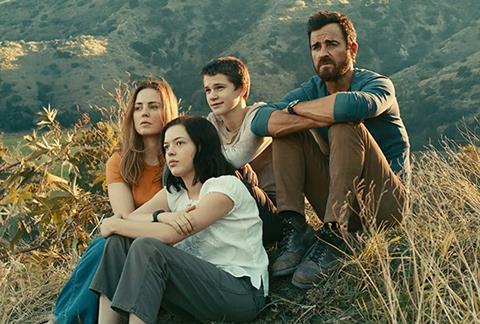Entertainment - Media News Watch originally published at Entertainment - Media News Watch
Leading figures in the UK TV and film industry have given a broadly positive initial response to the government’s plan to reform the film and TV tax reliefs into an expenditure credits system ahead of a global restructure of the tax sector.
But some producers have expressed disappointment nothing has been introduced to further support the independent sector.
Under the new Audio-Visual Expenditure Credit (AVEC), there will be a very slight increase in relief for film and TV, and a bigger boost for Animation Tax Relief (ATR) and Children’s TV Tax Relief (CTR).
Films and high-end TV programmes will have a headline credit rate of 34%. This will provide 25.5% in relief, which is a slight increase from the 25% currently available. It remains capped at 80% of core expenditure.
These changes are being made pre-emptively to protect the creative sector from global tax reform after the UK adoption of the OECD Pillar 2 framework, intended to stop profit shifting to low-tax jurisdictions and to stymie aggressive tax planning by multinational companies.
The relief rate increase (to 34% and 39%) reflect the fact that the expenditure credit, under the new Pillar 2 rules, will be taxable.
“It is incredibly positive that during tight economic times, the government are vigilant of how the film and TV industry is moving,” said Stephen Bristow, partner, Saffery Champness LLP, who has been deeply involved in the policy development of independent UK film and television. “The Treasury is anticipating possible negative consequences and taking actions to ensure that those negative consequences don’t happen,” said Stephen Bristow, partner, Saffery Champness LLP.
The new R&D tax relief system is already in place. According to Bristow, it is “straightforward to use” and “as clear, simple and smooth as our current incentive is”.
The government is expected to provide further detailed guidance about the relief over the course of the summer when the draft legislation will be published.
Timeline
AVEC is due to start on January 1, 2024. Film and TV productions that have not completed principal photography will still be eligible for relief under the existing system. This will continue until March 31, 2022. Let’s not underestimate the amount of work that will have to be done on that,” said Adam Minns, executive director of COBA, the UK industry body for digital, cable and satellite broadcasters.
Independent film producers are asking why animation and children’s TV are now eligible for a higher credit rate of 39% while they will receive 34%.
“Any increase in the tax credit is good news but what we were really hoping was that the independent
sector would have been granted a bonus in that realm and that hasn’t happened,” said producer Rebecca O’Brien of Sixteen Films, whose credits include Ken Loach’s Cannes hopeful
The Old Oak. [film] “The new system is good news for corporate Britain, to attract inward investment, however, what we really wanted was that the independent sector would be granted a bonus in that realm,” said Rebecca O’Brien of Sixteen Films. She also expressed her disappointment that the independents weren’t given special treatment to address the “market failure” in the sector. Of course, I’m grateful for anything we can get frankly but I also fear that this doesn’t address that particular issue.”
However, John McVay, chief executive of trade body Pact, who has spearheaded calls for an enhanced tax credit for independent producers, argued it was important to recognise the government’s continuing support of the sector at this time.
“I love all my members and my producers dearly but sometimes they have to think not just about them. “In the context of where the UK economy is at the moment, when nurses and doctors are on strike and people’s living standards haven’t improved since 2008, we need to remember that we are very fortunate,” he said.
This is something we need to be aware of. Yes, the tax credit generates huge benefits to the UK economy, it sustains high-level jobs but we always have to take the view we should be grateful we are still getting support of the British taxpayer and the current government.”
Citing the enhanced support for children TV and animation, McVay added: “The government will always listen to compelling evidence where there is a market failure or where the purposes of an intervention are not delivering as they should. That’s the case we will continue to make to government to support film.”
Minns, though, pointed out that “every single bit of reporting done on this, every single independent analysis commissioned by the government, the BFI or industry shows that the UK gets back the value of the tax credit or tax credit – and then some.”
“Arguably, the biggest success story in the UK sector in the last decade has been the growth in production which is underpinned by the tax credit,” Minns said.
Reassurance
The industry was clearly caught out by yesterday’s news. McVay admitted that “no one knew yesterday” that
Jeremy Hunt would speak about tax credits. We all believed it would be later. They have made it official, as they are introducing the new system on January 1. This was surprising considering the brief consultation, which was
at the beginning of the year, and the fact that it closed a few weeks ago.[chancellor]UK industry representatives have been trying to assure US studios and streamers the changes won’t adversely affect them. The Treasury has had “active conversations” with the MPAA and the studios about the new system.[held]”The studios and streamers are constantly in touch with us because they are shooting so much in the UK,” said Adrian Wootton, chief executive of the British Film Commission of the ongoing attempts to keep them up to speed on the changes.
Further reforms may be made later to the relief system. The government indicated in the consultation document that it is looking into further targeted support for visual effects work. Leading figures in the VFX sector have welcomed this decision. William Sargent, chairman of the Framestore Company 3 Group, welcomed the decision to look at the “consequences the 80% cap have on qualifying expenditure.”
Significantly, the government also decided to maintain the PS1m per hour expenditure threshold for high-end TV after listening to industry concerns about proposals to raise it. It is also reducing from 30 to 20 minutes the minimum slot length that a high-end television programme must have to be eligible to receive a tax credit. This will be applied episode-by-episode. In the past, shorter episodes could be commissioned together to meet the PS1m average core spend per hour.
McVay stated that the PS1m was essential to British domestic production. “It was totally irrelevant for inward investments because most of their
programs are way above that cost per an hour, but many of our comedies are made at PS1.2m or less.” Minns said that if the threshold was raised to, say, PS1.5m, then we would have difficulty getting the money.
One group that could be adversely affected is the video game industry. Under the new system, relief will only be available for work done in the UK and will no longer be able to claim EEA expenditure.[streamers and studios’]In the longer run, it is possible other countries will now look to amend their film and TV tax relief programmes in the same way as the UK as they look to conform to the Pillar 2 framework.
In the UK industry figures have praised the government’s prompt intervention to “future-proof” the audiovisual tax exemptions.[the shows] Bristow observed that “at every instance, it is necessary to say that government steps up, listens and takes action.”
Entertainment - Media News Watch originally published at Entertainment - Media News Watch



